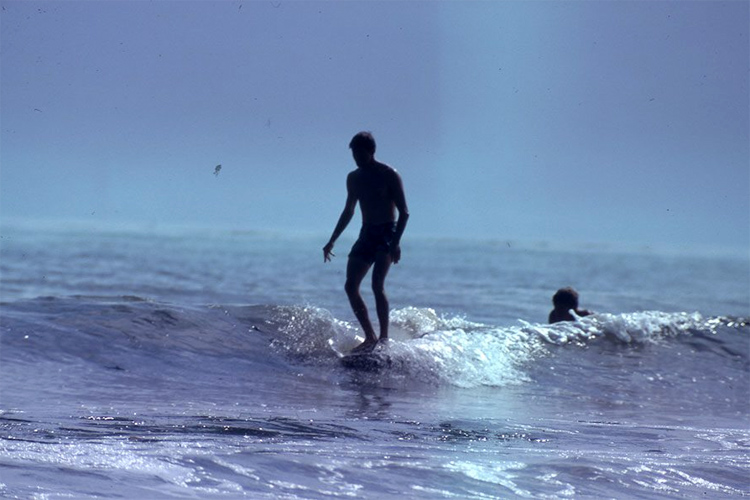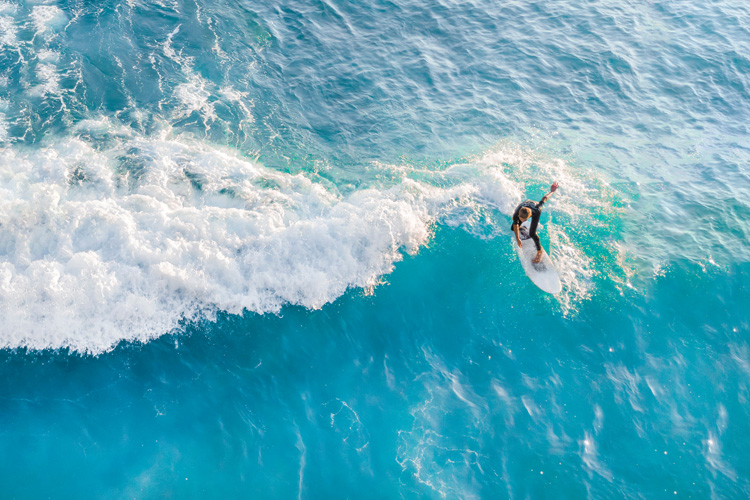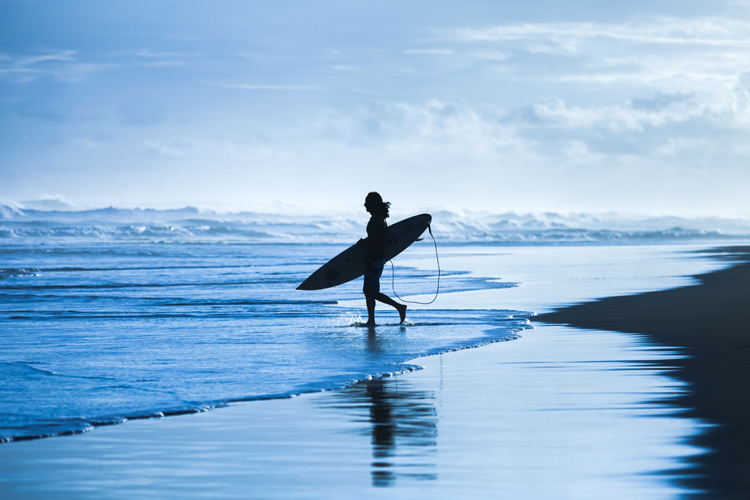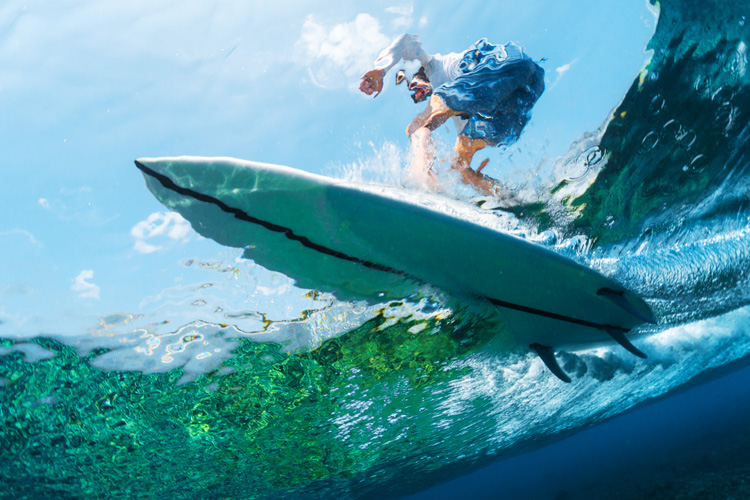The ocean has intensely affected me ever since I sat on the beach as a kid in Corona del Mar while my dad lifeguarded.
My first film was about the esoteric sides of surfing - style and grace and art.
Since most films had "surf" in their title, like "Surf Safari," "Surf Crazy," "Surf Fever," and "Surf!," I wanted mine to be original, so I called it "A Cool Wave of Color."
These films defined what it meant to be a surfer.
Surfers loved them because it was their lives glamorized on the big screen, and non-surfers wanted to be them, yearning for that "California-surfer" lifestyle.
Surf films showed the athleticism that went into the sport, the camaraderie, and the talent that it took to make something so physically intense look so effortless.
That carefree attitude is what made surf films so appealing.

Besides the rare surf contest or TV show, surf film screenings in the 1960s became our tribe's main cultural experience-our one way to channel our excitement about this strange new sport which attracted increasing numbers of teenagers by the day.
Surfers were rebellious and out of step with the rest of society: long-haired, bleached-blonde outsiders who had no concern for the conventions of society.
Surf film screenings were a cultural phenomenon where we could all get together and celebrate.
They were loud, fun, and only to be enjoyed a handful of times each year.
Some films came with a printed program, a small magazine that the unruly crowd quickly folded into 1,000 soaring paper airlines.
If a film was bad, surfers would be quick to let the filmmaker know just how bad it was, who was often narrating live from the stage.
I lived for this uncertainty factor.
Changing Waves
However, the craze of surf films didn't last.
The feeling of uniqueness and rebelliousness died away as surfing became more mainstream, organized, competitive, and televised.
Then, in the early 1980s, VHS surf videos killed off the live events forever.

Gateway to Environmental and Educational Films
With the emergence of new media available in the 1980s, it made live events obsolete.
No longer did surfers have to meet up for live screenings in high school auditoriums or independent theaters.
Low budget surf media was everywhere. While this was the end of one era, it led to opening doors that weren't thought of before.
Surf films were no longer being consumed like they used to, but could now be used as educational materials for environmental preservation.
This opened the door for surf films to become synonymous with preservation, conservation, and nature.
What was once used as a rebellion, was now being used to show what was happening in pristine, fragile ecosystems across the world.
Surf films no longer focused on the long-haired, rebellious outsiders, now calling out developers, commercial exploiters of the ocean, and all those who would change the coastal environment for the worse.
Surf films, as we once knew them, had changed.

The Importance of Education and Conversation
This was a filmmaking gamechanger.
While the love of creating entertaining and artful movies still persisted, more and more filmmakers began realizing that education and entertainment could be one and the same.
By showing the audience the beauty that the ocean has to offer, we were also showing them what we had to protect.
It's one thing to hear someone preach to you about ocean conservation, and it's another thing to see it for yourself.
One of the best ways to get people to pay attention to and care about environmental issues is to show them something they love, and warn them that it could be taken away if action isn't taken.
Almost everyone wants to stand for something bigger than themselves.
Using films about the sport and cultural phenomenon of surfing can impact people's ideas about environmental protection and caretaking, but it's going to take more of us banding together - including many of us who attended the glory years of surf film screenings - to help ensure that future generations can enjoy the ocean's natural beauty just like we did years ago.
As Teddy Roosevelt discovered, and modern-day scientists like Sylvia Earle have proven, the battle of protection never ends.
The profit to developers or politicians far outweighs all common sense. As John Muir said, "In every walk with nature, one receives more than he seeks."
I think all of us intuitively understand that one of the goals of humanity is to honor beauty, strive for serenity, and appreciate something bigger and more divine than money.
By producing honest films that celebrate the wonders of the world with a powerful message of conservation, 21st-century surf films can achieve the highest level of accuracy and integrity without seeming preachy or boring.
For every viewer, the genre has the opportunity to produce a deep joy and commitment to a healthier world and a happier life.
Words by Greg MacGillivray | Founder of MacGillivray-Freeman Films
